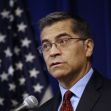Medical groups including the American Society of Anesthesiologists (ASA), the American College of Emergency Physicians (ACEP), and the American College of Radiology (ACR) have brought forward a lawsuit against several government agencies over the implementation of the No Surprise Billing Act.
The lawsuit was filed in the federal district court of Chicago in late December and argues that the interim final rule made on the No Surprise Billing Act goes against the language of the Act. These medical groups argue that as a result, the rule would harm patients and their access to medical care.
The No Surprise Act is a federal law that was passed in late December 2020 and was designed to protect patients against receiving surprise medical bills. The Act would limit billing by not allowing hospitals and doctors to bill a patient more than the in-network cost for unexpected bills. Instead, medical providers and insurance companies must work out what the actual amount paid will be. If neither side can agree on an acceptable market rate, a third-party arbitrator will be brought in as part of the independent dispute resolution process to settle the disputes.
The bill, which was designed to protect patients, has garnered scrutiny from these medical groups because they argue that the final rule allows insurance companies to use the new law as leverage against providers. Insurance companies would be allowed to terminate current agreements with medical providers that have negotiated high fee schedules and corner them into agreeing to lower rate contracts. In doing so, these insurance companies will narrow their provider networks, ultimately leading to reduced access to care, according to the medical groups.
The ACR shared in a statement, "The conscious decision by the White House to ignore the specific legislative language and intent of the No Surprises Act as the new law is implemented has empowered insurers to drastically cut reimbursement, narrow medical networks and restrict patient access to their chosen providers -- including radiologists."
The groups explain that the interim final rule fails to ignore the influence insurance companies can have over the independent dispute resolution process that may take place to settle a claim. The arbitrator is required to weigh many different factors equally when assessing a claim, and the qualified payment amount is one of those many factors taken into consideration. However, the lawsuit explains that the qualified payment amount — an unverified rate which is set by insurance companies — will be the primary determinant factor during the independent resolution process.
“Insurance companies will use their overwhelming market power and these flawed rules to push more physicians out of network and fatten their bottom line," explains ASA President Randall M. Clark. "If these rules are not overturned or corrected, insurance companies will use strong-arm tactics to abuse these laws as we have already seen in North Carolina, ultimately compromising timely access to care, potentially causing severe disruption and the wholesale loss of care for patients in areas that really need it."
Gillian Schmitz, president of ACEP explains, "It is deeply troubling that the administration would upend the deliberately balanced mechanism to resolve billing disputes established by Congress as part of the No Surprises Act. We are left with a law that will tilt market forces in favor of insurers and they are already exploiting their newfound incentive to push emergency physicians out of network.”
The chair of the American College of Radiology Board of Chancellors, Howard B. Fleishon contends, “Now, insurers are using the new law to increase their profits by artificially cutting reimbursement to a point that many providers can't absorb and become unable to remain in their network." Fleishon explains that underserved communities and rural areas are likely to suffer the most by what he describes as “insurer overreach.” As a result, patients may face higher out-of-pocket costs, longer wait times, and delayed diagnosis.






